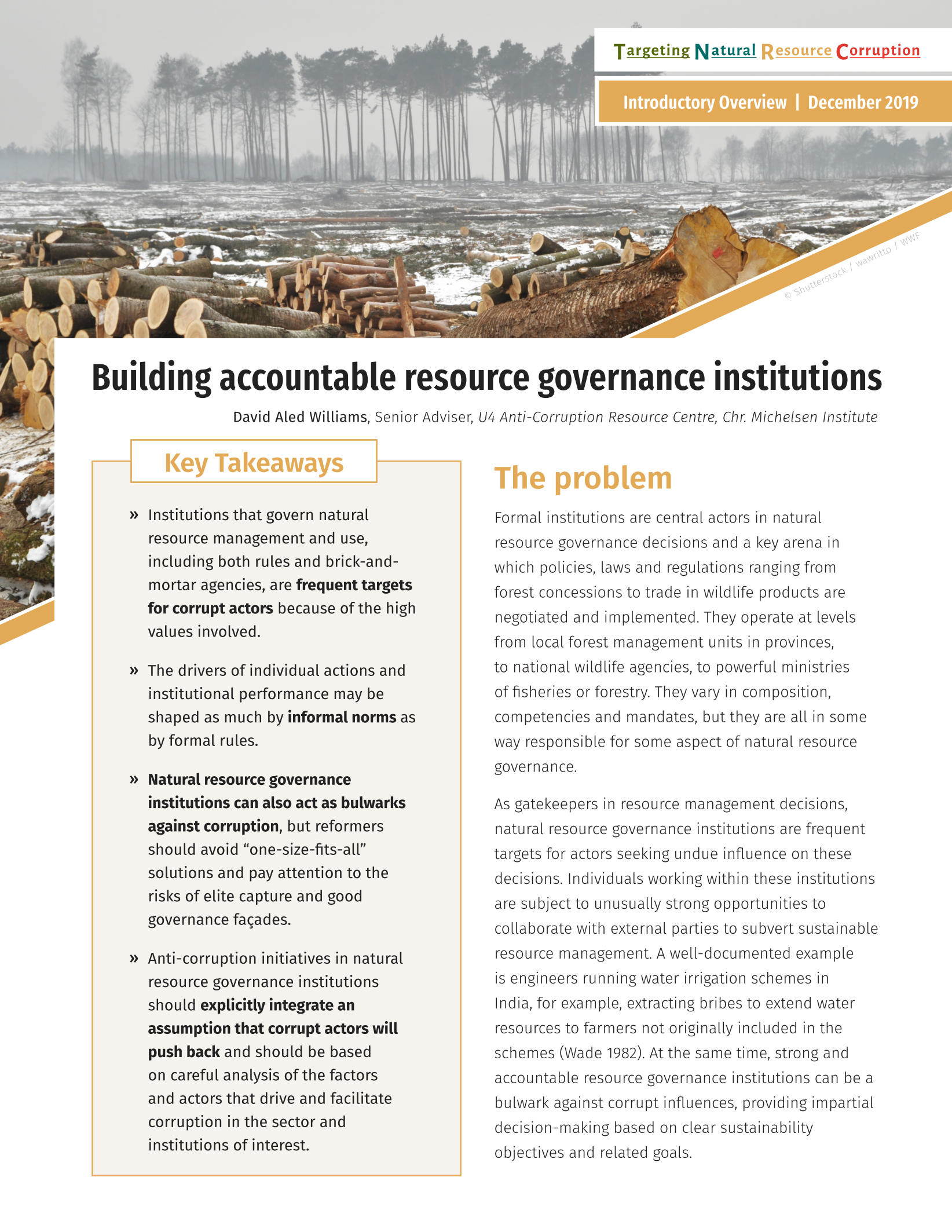Main points
- Institutions that govern natural resource management and use, including both rules and brick-and-mortar agencies, are frequent targets for corrupt actors because of the high values involved.
- The drivers of individual actions and institutional performance may be shaped as much by informal norms as by formal rules.
- Natural resource governance institutions can also act as bulwarks against corruption, but reformers should avoid “one-size-fits-all” solutions and pay attention to the risks of elite capture and good governance façades.
- Anti-corruption initiatives in natural resource governance institutions should explicitly integrate an assumption that corrupt actors will push back and should be based on careful analysis of the factors and actors that drive and facilitate corruption in the sector and institutions of interest.





